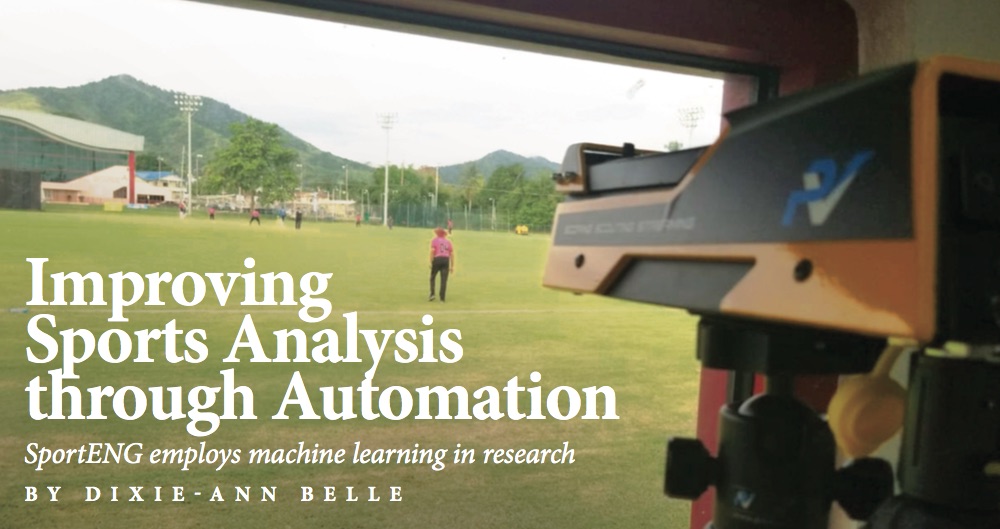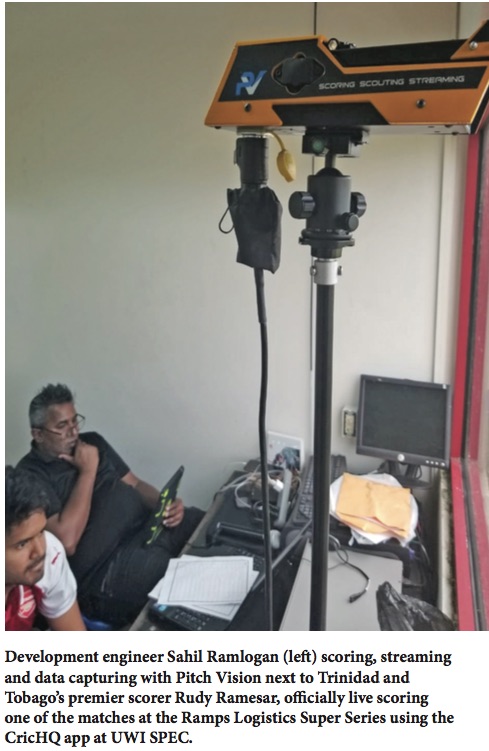

Many sports fans consider themselves experts on the technical prowess of local sports heroes like Keshorn Walcott and Brian Lara. However, few can be as deeply invested in studying local athletes as the Sports Engineering (SportENG) group at UWI’s Department of Electrical and Computer Engineering (DECE). While fans follow sports for entertainment, the engineering team is working on developing breakthroughs in the industry.
The group was formed by Dr Akash Pooransingh and Dr Sean Rocke to stimulate research. Dr Pooransingh emphasises that they want to use “the core competencies in engineering, applied science, signal processing, biotechnology, ICT and data analytics to meet the needs of elite athletes within the Caribbean region.” They have been delving into motion capture and broadcast analytics. This area encapsulates enormous potential. “Our research aims to utilise state-of-the-art machine learning and classification algorithms to provide automated solutions.”
One of the group’s projects involves improving live, online sport coding. Sports performance analysis, or sports coding, is a technique used to record events that happen during a match. Years ago sport coding was a tedious process that involved analysts spending hours reviewing footage. Current technology makes the process more efficient, but it still needs human engagement. A sports analyst is still required to click a button to record a moment in game play and then click again at the end of the recording for retrieval. The engineering team hopes to reduce this.
To aid in research, the group requires advanced equipment to collect data. This is where the cooperation of the company Novel Sports comes in. The equipment was unavailable in Trinidad and Tobago until the company brought in the system, Pitch Vision. According to Novel Sports director Duane Lall, they were eager to partner with UWI in piloting its use in local sports.
Lall says the company supports initiatives that promote development and education in the industry. He laments that Trinidad and Tobago is behind other countries in this use of analytics. He believes that this deficiency contributes to inconsistent performance in various sports.
To collect the vital data, researcher and development engineer in the Associate Professional programme Sahil Ramlogan was trained in using Pitch Vision. He used the equipment at cricket matches at the Ramps Logistics Super Series held recently at UWI SPEC and the Courts Women’s T20 Grand Slam tournament.

Ramlogan developed the algorithms for automating the process for his BSc in 2017. “It takes a full video of a game and starts extracting each delivery, so let’s say as soon as the bowler is about to jump... a video starts recording and then it will end ten seconds later.” He adds, “It could be as simple as a bowler running in, so you have an image of the bowler mid-jump... we feed the algorithm that part of it and say ‘ok this is what it looks like for a bowler running in and bowling the ball’.” Whenever the algorithm detects the sequence again, it will recognise the action.
“This is what we’re going to try to do in terms of research,” says Dr Pooransingh. “To automatically find the highlights and go deeper into the analytics.”
Sahil has also developed an algorithm that helps with stats. “That goes onto a cricket website and is able to extract the commentary information.... It then matches the information to the extracted video for each delivery and stores it into a searchable database.” Being able to collate these statistics and view the correlating videos is a valuable tool for coaches.
Sahil has also developed an algorithm that helps with stats. “That goes onto a cricket website and is able to extract the commentary information.... It then matches the information to the extracted video for each delivery and stores it into a searchable database.” Being able to collate these statistics and view the correlating videos is a valuable tool for coaches.
The SportENG group is excited to push deeper and to explore the potential of this project. Dr Pooransingh says, “This will provide a more meaningful use for currently available analytics. It also provides an opportunity to dive further into image-based analytics such as player movement and reactions during active play.”
Duane Lall points out the opportunities to prevent injuries. “With a glance you can get a whole new view of your players,” he states, outlining how coaches could then adjust training programmes to prevent problems.
Duane Lall points out the opportunities to prevent injuries. “With a glance you can get a whole new view of your players,” he states, outlining how coaches could then adjust training programmes to prevent problems.
The engineering group believes these developments could also contribute to medical/rehabilitation applications, animation and game creation, limb extraction and tracking, angle calculation, highlight detection and higher level image understanding for action recognition.
They hope to continue working closely with Novel Sports and entities that have a stake in this technology, as well as to increase awareness. “The university has a critical role to play in terms of educating people,” observes Duane Lall. “The university would give a sense of credibility and quality to the information.”
The engineering group is clearly determined to achieve their goals of evolving the world of Caribbean sport. Their passion for the task suggests that our national athletes will one day be winning gold based on their natural talent, hard work and the latest technological advancements.